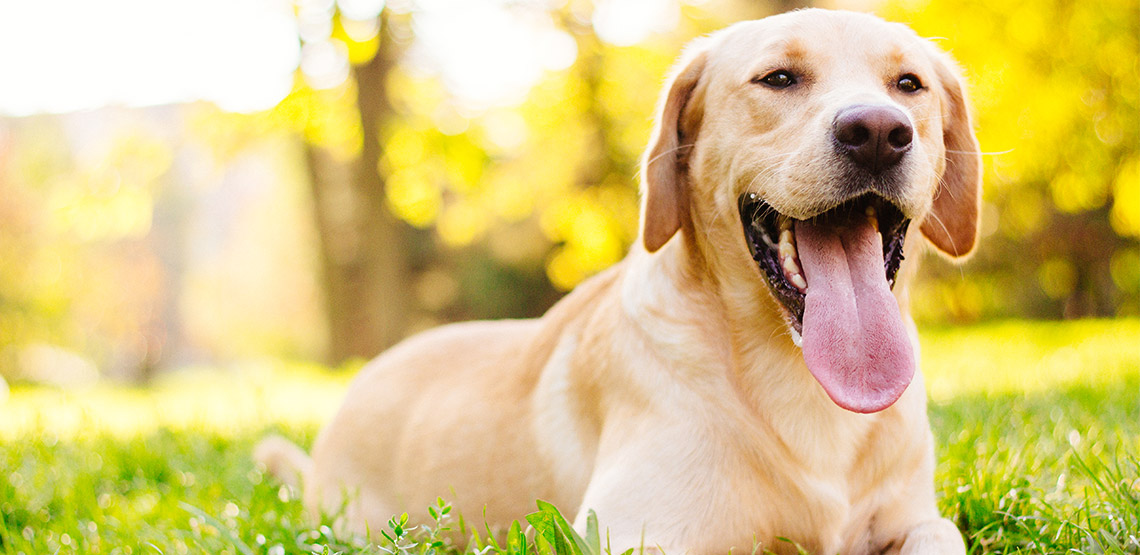A complete guide to the Labrador retriever
According to statistics generated by registered ownership, the Labrador retriever is the most popular breed of dog in the world. Labrador retriever breeders note that these animals are exceedingly gentle, affectionate and intelligent, making them excellent family pets and companions for people of all ages. They come in several variants, including the black Labrador retriever, the chocolate Labrador retriever and the yellow Labrador retriever, among others.
Appearance
Height: A male Labrador retriever puppy will reach 22 to 24 inches in height at the withers when fully grown. Females are, on average, about 2 inches shorter. This breed shows a close size similarity to the golden retriever.
Weight: The normal weight range of a healthy adult Labrador retriever is 55 to 70 pounds.
Coat: The soft double coat of a lab is almost always a single color. This breed's variants are named for the color of their fur – black Labrador retriever, yellow Labrador retriever, chocolate Labrador retriever and so on.
Ears and Eyes: Labrador retriever breeders and competitive show judges favor dogs with expressive, circular eyes that are brown or hazel in color. This breed has floppy, soft pendant ears that hang over the sides of its face.
Tail: These dogs should have strong, thick, hair-covered tails.
Disposition
The Labrador retriever is the world's most popular dog for good reason – it's intensely loyal, very intelligent, gentle, protective and playful. Labs are natural swimmers and crave human affection, attention and leadership.
AKC Group: Sporting
Related Search Topics (Ads):
Training: Labrador retriever puppies are among the easiest breeds to train. One thing to watch for, though, is their tendency to pull forward when leashed. This can cause injury, as they have very strong necks.
Ideal Environment: Unlike some other larger dog breeds, such as the English bulldog, this breed does not do well when kept indoors or in confined living quarters. They love activity and are happiest running, swimming or working.
Health and Care
Feeding: Labrador retrievers are highly susceptible to weight gain, so limit the dog's food intake. Obesity can cause serious health problems, including canine arthritis and canine diabetes, especially in older animals.
Grooming: Labrador retriever breeders recommend brushing these dogs once a week with a firm bristle brush. Bathe or dry shampoo the dog as needed. Other than that, the double coat is not hard to take care of.
Exercise: Get these dogs plenty of exercise for two reasons: First, it's in their nature to work hard and play hard, and unspent energy can lead to behavioral problems. Second, it's vital to keep them active so they don't gain weight. Budget at least half an hour per day to give the dog a vigorous workout.
Health Problems: Knee, eye, hip and elbow problems are relatively commonplace as these dogs age. Also, because they have large, soft ears that trap moisture, they can develop ear infections quite easily. Clean a Labrador retriever's ears often. Your vet can tell you about signs and symptoms of Labrador retriever skin disorders, which are usually caused when the saliva from dog fleas penetrates the dog's skin.
Average Lifespan: Labs live about 12 years.
Find a Labrador Retriever to Take Home
Abandoned, abused and unwanted labs often wind up in Labrador retriever rescue facilities, where they await a new home. Those interested in acquiring a trained adult dog with plenty of love to give are urged to contact their local animal control center or SPCA to connect with local dog adoption resources.
A certified Labrador retriever breeder will generally charge between $450 and $600 or so for a puppy. Though the cost savings can be tempting, it's not a good idea to buy a dog from a puppy mill. These farms don't screen their animals for good health, and they raise dogs in inhumane conditions.
